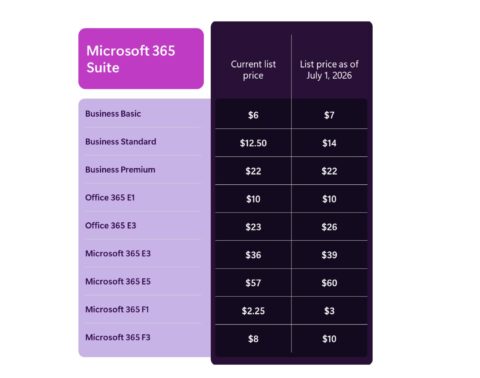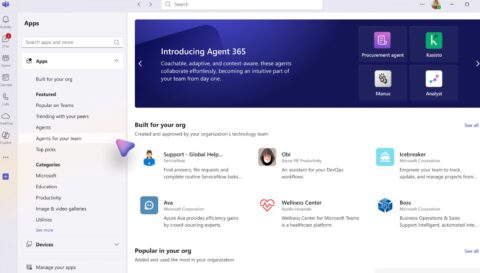Updated: April 2, 2024 (April 2, 2024)
BlogWhat to know before you go Teams-less

It’s not just customers in the European Economic Area (EEA) and Switzerland who can buy cheaper versions of Microsoft 365/Office 365 without Teams bundled as part of their subscriptions. On April 1, 2024, Microsoft announced it is making this Teams-less option available to customers globally.
Microsoft is making these unbundling moves to try to head off European antitrust regulators investigating the impact of Microsoft bundling Teams with other Microsoft products. (The official Microsoft line is “globally consistent licensing helps ensure clarity for customers and streamline decision making and negotiations.”)
Just as it has done in the EEA, Microsoft is allowing commercial customers who already are subscribed to M365/O365 to keep the plans they have, with Teams bundled for no additional charge. Existing customers can still buy more of the “Teams bundled” licenses if they want, and also have the option of buying no-Teams SKUs for $2.25 USD less than their Microsoft 365/Office 365 subs cost normally. And existing customers also have the option to switch to Teams-less subscriptions on their contract anniversary or renewal.
“Net-new” Office 365/Microsoft 365 customers — meaning those who don’t have an existing M365/O365 subscription that includes Teams (or proof of intent to purchase such a sub) as of April 1 — will need to purchase the new no-Teams M365 or O365 subscriptions plus a separate “Teams Enterprise” SKU in order to get Teams. Or they can buy the no-Teams subscriptions without the Teams Enterprise add-on if they don’t want or need Teams.
Teams Enterprise provides meetings, chat, calling (VOIP), and collaboration without any limitation on seat numbers, and a 1000-seat cap on meeting attendees, and will cost $5.25 per user per month. It’s worth noting Teams Enterprise does not include Teams Phone Standard, which lets users replace their PBX systems for making and receiving calls with Teams.
These changes announced April 1 won’t impact customers in the EEA and Switzerland (who already got the Teams-less option); those customers continue with the same SKUs announced last year. Then newly announced unbundling changes also do not affect U.S. government, non-profit, academic or consumer customers; they only affect commercial customers.
Doing the Math
If an organization realizes not every M365/O365 subscriber at the company needs Teams, switching those users to a Teams-less plan might make sense. Why not save a few dollars per user per month if Teams isn’t part of your company’s or division’s workflow?
Office 365 E5 No Teams will cost $35.75 USD per user per month, vs. Office 365 E5 with Teams already bundled, which goes for $38 per user per month. Microsoft 365 E5 with No Teams costs $54.75 USD vs. Microsoft 365 E5 with Teams bundled, at $57 per user per month.
However, customers must think through when and whether dropping some of their subscriptions with Teams already bundled actually adds up.
If a M365 E3 user paying $36 USD per user per month for a subscription with Teams bundled as part of it gets moved to the M365 E3 No Teams SKU for $33.75 per user per month, but later needs the Teams Enterprise add-on for $5.25 per user per month, that customer is now paying $39 per user per month, or $3 per more per month, for the same set of features.
Directions on Microsoft analyst Jim Gaynor says the way to think about this is that seven users with the old “Teams bundled” licenses cost the same as four “no Teams” users and three “Teams Enterprise” users combined. In other words, unless your organization will have more than four out of seven users without Teams, the new SKUs aren’t saving any money. (If an organization decides to supplant Teams with Zoom or Slack or another paid add-on solution, or mix-and-match old and new licenses in the same subscription, all that math goes out the window.)
Because so many Microsoft and third-party products are integrated with Teams these days or use Teams-based apps as their main user interfaces, axing Teams might not be a simple decision. Many of those using Microsoft 365 Copilot claim the most useful piece is Teams Copilot. And Teams Copilot acts as the anchor for Microsoft 365 Chat (now confusingly known as the Microsoft Copilot for Microsoft 365 Copilot).
Planning for the long(er) term
An unknown in the brave, new, Teams-less world is how long Microsoft will continue to allow existing M365/O365 customers to stick with their current subscriptions with Teams bundled for free. Microsoft has not addressed this issue, but there’s no guarantee it couldn’t opt to remove this allowance the next time a customer’s licensing contract is up for renewal.
Microsoft officials have made no bones about their plan to try to continue to grow company revenues — and especially the revenues of its Office group — by making more features available as paid and premium add-ons.
Directions on Microsoft has been tracking these proliferating add-ons and the trajectory for them continues to climb. In December 2019, Directions counted 14 such available add-ons. By March 2024, Directions found 65. With this global Teams unbundling policy, there are even more. Microsoft now has 12 different “no Teams” Microsoft 365/Office SKUs listed in its April 1, 2024, Product Terms, plus the new Teams Enterprise one.
“In the end, this move is about Microsoft trying to stay ahead of regulatory scrutiny, not about offering customers a way to reduce costs,” said Gaynor.
Related Resource
April 2024: Microsoft unbundles Teams globally
August 2023: Microsoft unbundles Teams in EEA, Switzerland















